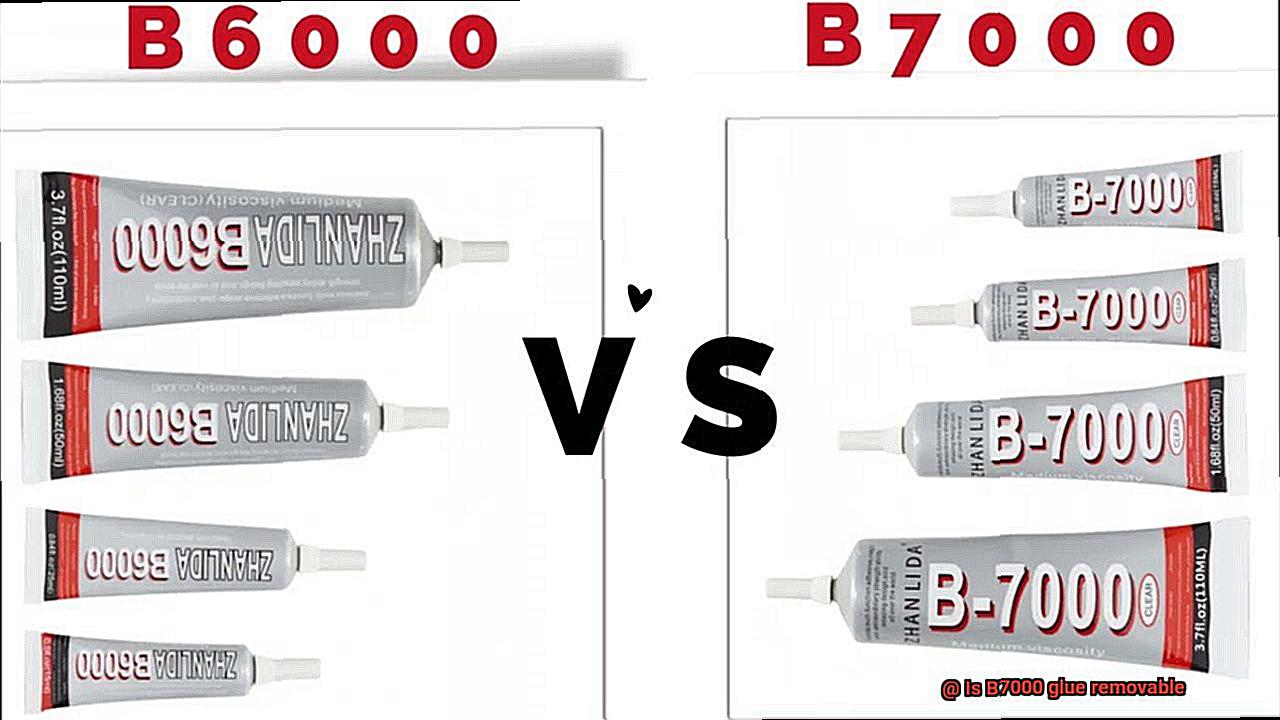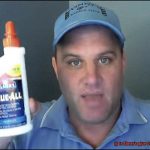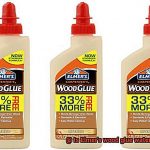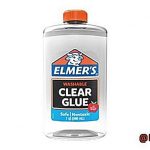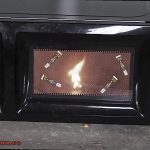Have you ever been in a sticky situation where you needed to glue something together permanently? Maybe you had to fix a shattered phone screen or piece together a broken trinket. In such cases, B7000 glue is undoubtedly one of the most popular options available. This adhesive is known for its high strength and versatility. But what if you make a mistake or need to take things apart? Is B7000 glue removable?
The answer is yes, but removing it can be tricky and requires careful attention. Unlike other types of glue or adhesive, B7000 doesn’t just wash off with soap and water. It needs a specific removal solvent or other techniques to dissolve it entirely.
In this post, we’ll dive into the details of B7000 glue, exploring what makes it so effective and explaining how you can remove it if necessary. You’ll learn about the best solvents for dissolving B7000 glue and some helpful tips for removing it without damaging your surfaces.
So if you’ve ever found yourself wondering whether B7000 glue is removable, rest assured that we’ve got you covered. Let’s get started.
Advantages of B7000 Glue
Contents
- 1 Advantages of B7000 Glue
- 2 Is B7000 Glue Removable?
- 3 The Best Solvents for Removing B7000 Glue
- 4 How to Remove B7000 Glue with Acetone
- 5 How to Remove B7000 Glue with Alcohol or Oil
- 5.1 Preparing the Surface
- 5.2 Using Alcohol
- 5.3 However, it is important to note that alcohol can damage certain surfaces, such as plastic or painted surfaces. Always test a small area first before using alcohol on a larger scale. Additionally, removing all the glue may require multiple applications.
- 5.4 Using Oil
- 5.5 Another option for removing B7000 glue is using oil. Vegetable oil or coconut oil can be applied to the affected area and left to soak for a few minutes before gently rubbing with a cloth or cotton swab. The oil helps to break down the adhesive, making it easier to remove.
- 5.6 The Importance of Testing
- 6 Tips and Precautions when Removing B7000 Glue
- 7 Conclusion
B7000 glue has been making waves in the crafting and DIY world for its remarkable advantages. This versatile adhesive has quickly become a go-to choice for professionals and enthusiasts alike. Here are some of the top advantages of B7000 glue.
Firstly, B7000 glue boasts remarkable bonding capabilities that make it suitable for a wide range of materials, including metal, plastic, glass, and more. Once applied and allowed to dry, it forms an incredibly strong bond that is difficult to break.
Secondly, its versatility is unmatched. B7000 glue can be utilized in various applications, from repairing electronics and jewelry to fixing shoes and even creating DIY projects. This makes it a must-have for anyone who loves to create and repair.
Thirdly, B7000 glue is waterproof, meaning it can withstand exposure to water or moisture without losing its adhesive properties. It’s perfect for outdoor applications or areas where moisture is present.

Fourthly, this adhesive is heat-resistant, which makes it suitable for applications where heat is present. It can withstand high temperatures without losing its adhesive properties.
Finally, B7000 glue is flexible. It can be used on materials that bend or flex without cracking or breaking. This ensures that your repairs or creations remain intact even if they are subjected to movement or pressure.
But what about removal? The good news is that B7000 glue can be removed with the use of a strong solvent such as acetone. However, it’s important to test the solvent on a small area first before applying it to the entire surface. Also, take precautions when using solvents as they can be harmful if not used properly.
Is B7000 Glue Removable?
B7000 glue is a highly sought-after adhesive due to its strong bonding properties and flexibility. It’s perfect for electronics, automotive, and jewelry making industries, but what happens when you need to remove it? The good news is that B7000 glue is removable, but the process requires special tools and techniques. As an expert in this field, I have compiled valuable information to help you safely and effectively remove B7000 glue.
The first step is to identify the right solvent or adhesive remover for the specific material or surface you’re working on. Acetone is one of the most effective solvents for removing B7000 glue, but it can damage certain materials such as plastic and rubber. It’s crucial to test the solvent on a small, inconspicuous area before using it on the entire surface.
To remove B7000 glue using acetone, you’ll need a clean cloth or cotton swab. Apply a small amount of acetone onto the cloth or swab and gently rub it onto the glue until it begins to soften. Repeat this process several times until all the glue has been removed.
Another effective way to remove B7000 glue is by using a scraper or razor blade. However, this method requires extreme caution, as it can damage the surface or material underneath. Carefully slide the scraper or razor blade under the edge of the glue and gently pry it away from the surface.
It’s important to note that removing B7000 glue can be challenging, especially if you’re working with delicate materials or surfaces. Seeking the help of a professional is always best if you’re unsure about how to proceed safely.
The Best Solvents for Removing B7000 Glue
Solvents are your answer. But not all solvents are created equal. As an expert, I recommend using acetone or isopropyl alcohol as they are the best solvents for removing B7000 glue safely and effectively.
Acetone is a strong solvent that dissolves B7000 glue effectively without damaging most surfaces. However, it is crucial to note that acetone should not be used on plastic surfaces as it can cause discoloration or even melting. Isopropyl alcohol is a milder solvent that can effectively dissolve B7000 glue and is less likely to damage surfaces. It can be safely used on most materials.
Apart from acetone and isopropyl alcohol, other solvents such as methyl ethyl ketone (MEK), naphtha, and xylene can also be effective in removing B7000 glue. However, they should be used with caution as they are more potent than acetone and isopropyl alcohol and can damage certain surfaces.
When using solvents to remove B7000 glue, it’s essential to follow the manufacturer’s instructions and safety guidelines. Always use proper ventilation, protective gear such as gloves and goggles, and work in a well-ventilated area.
How to Remove B7000 Glue with Acetone
B7000 glue is a heavy-duty adhesive that is commonly used in various DIY projects, electronic repairs, and phone cases. However, it might be necessary to remove the glue for maintenance or repair purposes. Fortunately, acetone can be used to dissolve and remove B7000 glue from surfaces. Here is an in-depth guide on how to remove B7000 glue with acetone.
Prepare for Safety
Acetone is a strong solvent that can be harmful to your skin and eyes. Therefore, it is essential to put on gloves and safety goggles before starting the process. Also, work in a well-ventilated area to avoid inhaling the fumes.
Test on a Small Area
It is crucial to test acetone on a small area first to avoid damaging the surface. Apply a small amount of acetone on an inconspicuous area and let it sit for a few minutes. If there are no signs of damage, you can proceed to apply it to the entire surface.
Apply Acetone
Dip a cotton swab or ball into acetone and apply it directly to the B7000 glue. Let it sit for a few minutes to allow the acetone to penetrate and dissolve the adhesive.
Scrape off the Glue
Use a plastic scraper or credit card to gently scrape off the dissolved glue. Be careful not to scratch or damage the surface underneath. If the glue is still difficult to remove, apply more acetone and repeat the process until all of the glue has been removed.
Clean Surface
Once you have removed all of the glue, wipe the surface clean with a clean cloth or paper towel. Dispose of any used cotton swabs and acetone properly as they are flammable and can be hazardous if not handled correctly.
How to Remove B7000 Glue with Alcohol or Oil

Fear not. Fortunately, there are a few methods that can help you remove this powerful adhesive. In this blog post, we will discuss how to remove B7000 glue with alcohol or oil.
Preparing the Surface
Before attempting to remove the glue, it is important to ensure that the surface is clean and dry. Any dirt or debris on the surface can make it difficult to remove the glue effectively. Start by wiping the surface with a clean cloth and allowing it to dry completely.
Using Alcohol
Alcohol is a popular solvent for removing B7000 glue. Isopropyl alcohol is particularly effective for this purpose. Simply apply a small amount of alcohol to a cotton swab or cloth and gently rub the affected area. The alcohol dissolves the glue, making it easier to remove.
However, it is important to note that alcohol can damage certain surfaces, such as plastic or painted surfaces. Always test a small area first before using alcohol on a larger scale. Additionally, removing all the glue may require multiple applications.
Using Oil
Another option for removing B7000 glue is using oil. Vegetable oil or coconut oil can be applied to the affected area and left to soak for a few minutes before gently rubbing with a cloth or cotton swab. The oil helps to break down the adhesive, making it easier to remove.
It is important to note that oil may not be as effective as alcohol and may require more time and effort to remove all of the glue. Additionally, oil can leave behind a residue that may need to be cleaned off afterward.
The Importance of Testing
It cannot be stressed enough how important it is to test any solvent on an inconspicuous area before using it on a larger surface. This ensures that the solvent does not cause any damage to the surface and that it is effective in removing the glue.
Tips and Precautions when Removing B7000 Glue
Removing B7000 glue is not an easy task, but it can be done safely and effectively with some tips and precautions in mind. Here are five sub-sections to guide you through the process.
Protective Gear
Before starting to remove B7000 glue, it is crucial to wear protective gear such as gloves and eyewear. The chemicals used in the removal process can be harsh and may cause skin or eye irritation if not handled properly.

Solvent Selection
Choosing the right solvent is key to successfully removing B7000 glue. Acetone or isopropyl alcohol are commonly used solvents that can break down the bond of the glue without damaging the surface it is adhered to. However, it is important to test the solvent on a small, inconspicuous area first to ensure that it does not damage the surface.
Application Technique
Applying the solvent sparingly is recommended to avoid damaging the surface underneath the glue. Use a plastic scraper or spatula to gently remove the glue without scratching or damaging the surface. Avoid using too much pressure when removing the glue, as this could damage the surface.
Ventilation
Working in a well-ventilated area is essential when removing B7000 glue as some solvents can emit fumes that may be harmful if inhaled. Working outdoors or in a space with good air circulation can prevent any potential harm from inhaling fumes from the solvents used in the removal process.
Post-Removal Cleaning
After removing B7000 glue, clean the surface thoroughly with soap and water to remove any remaining residue from the solvent. This can help prevent any potential damage or discoloration of the surface over time.
xPyKSFTqPd4″ >
Conclusion
To sum up, B7000 glue is a versatile and flexible adhesive that has gained popularity for its remarkable bonding capabilities. However, there may come a time when you need to remove it for maintenance or repair purposes. The good news is that B7000 glue can be removed, but it requires special tools and techniques.
To safely and effectively remove B7000 glue, acetone and isopropyl alcohol are the best solvents to use. It’s important to test the solvent on a small area first before applying it to the entire surface. Additionally, proper precautions must be taken when handling solvents as they can be harmful if not used correctly.
When removing B7000 glue, protective gear such as gloves and eyewear should be worn, and work should take place in a well-ventilated area. Choosing the right solvent is crucial, applying it sparingly with a plastic scraper or spatula, and thoroughly cleaning the surface after removal.

